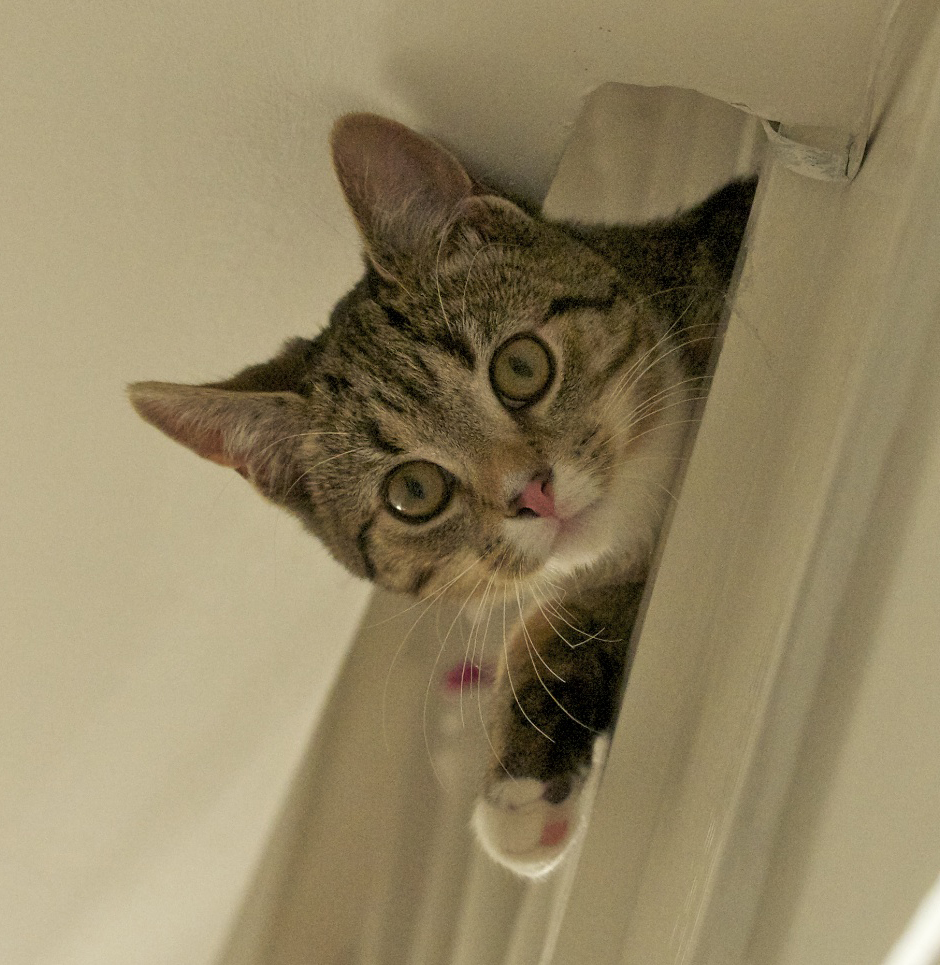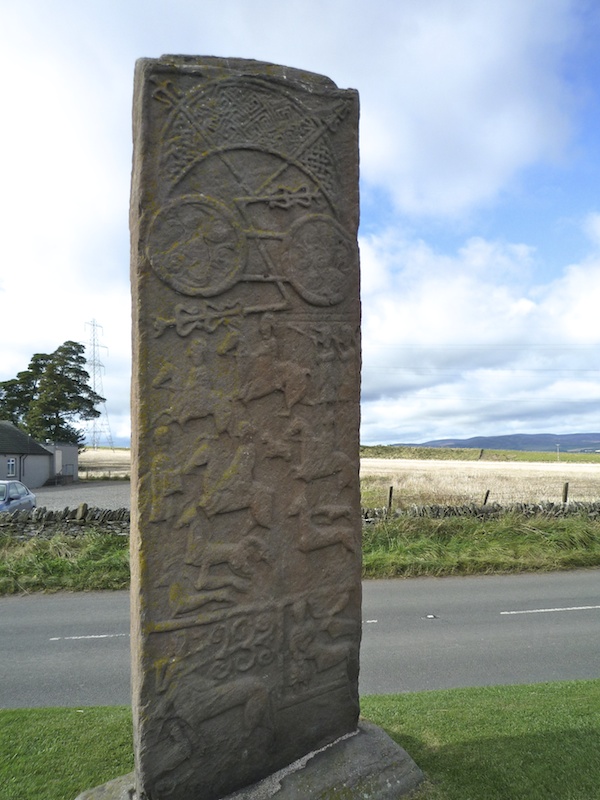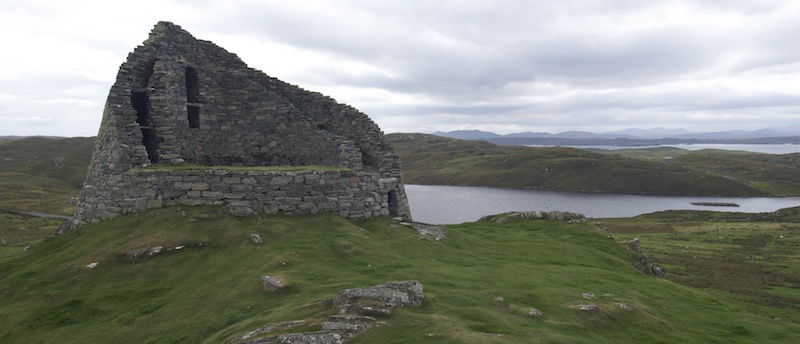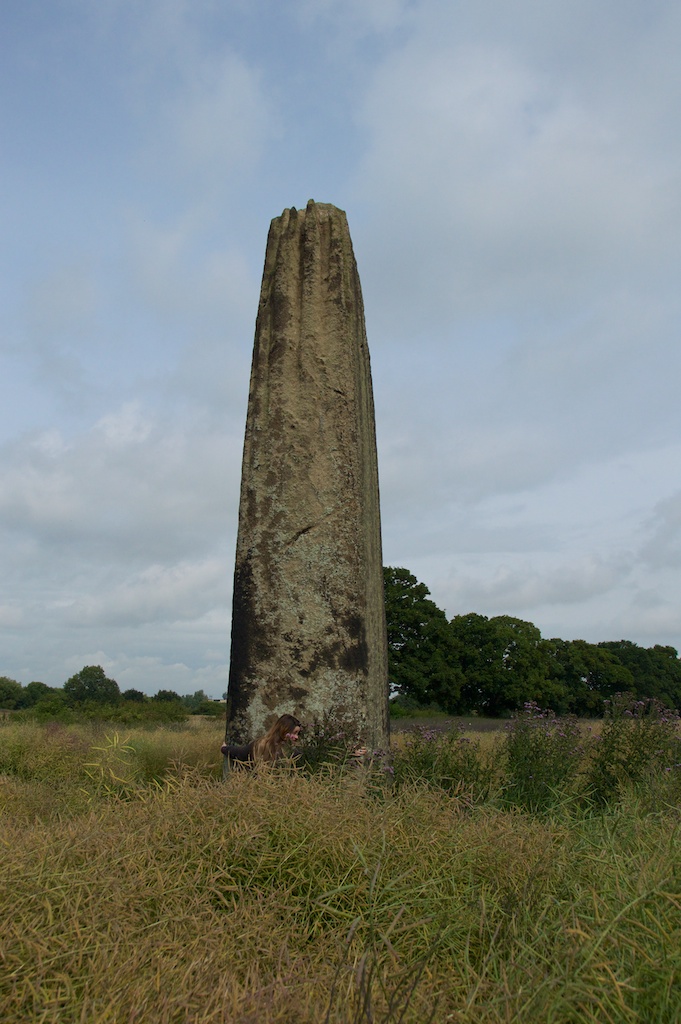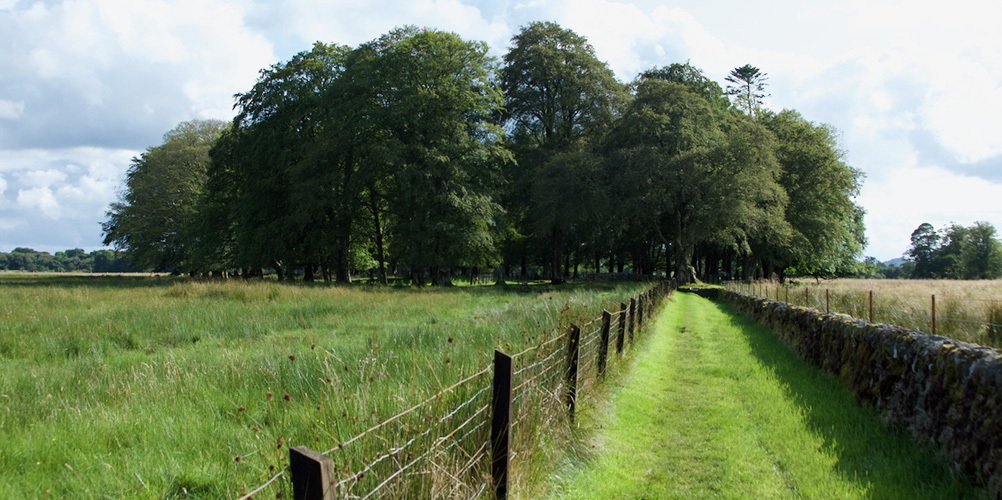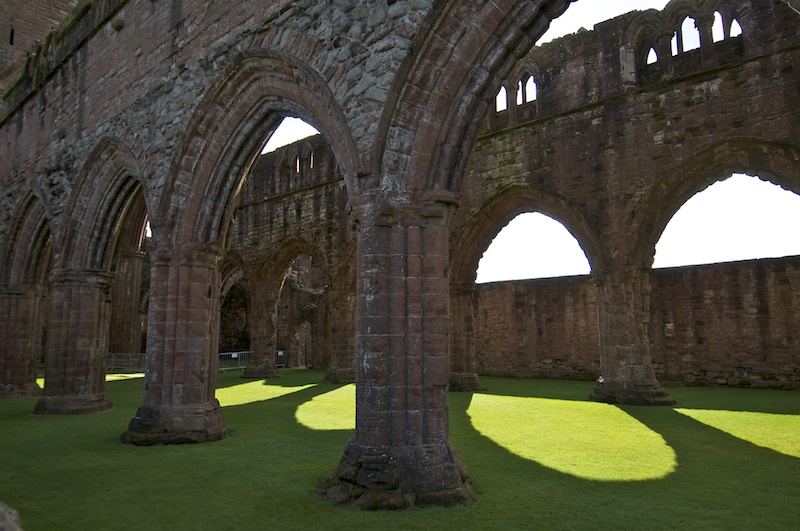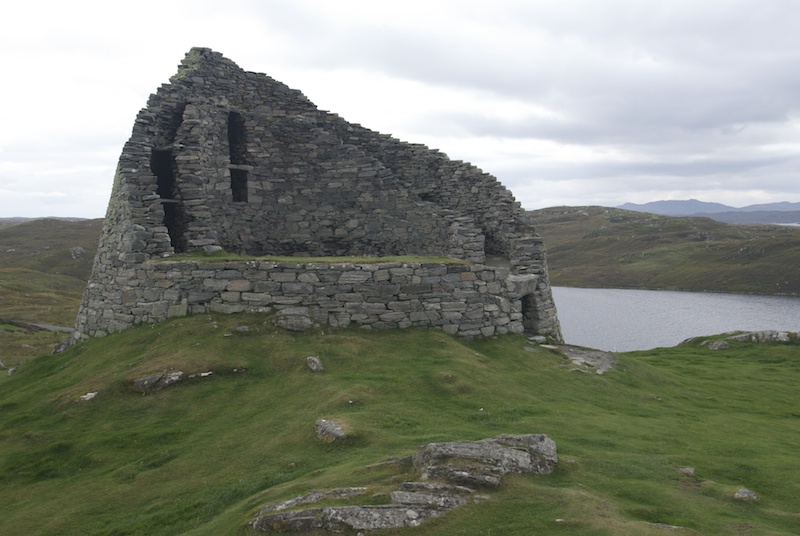
Dun Carloway: strong and silent
 Some time around 50 BC, a group of hardy individuals got together on a wind-scoured promontory near Carloway (in Gaelic, Carlabhagh) on the Isle of Lewis, and started to build a broch.
Some time around 50 BC, a group of hardy individuals got together on a wind-scoured promontory near Carloway (in Gaelic, Carlabhagh) on the Isle of Lewis, and started to build a broch.
The stone circles of Callanish, a few miles to the south, were already ancient by this time, while at the other end of the British Isles the first Roman soldiers were setting foot on English soil. They wouldn’t bother the builders of Dun Carloway, however, and it would be another seven hundred years before first Viking longboats appeared on the horizon.
Brochs – or the remains of them – still tantalise archaeologists to this day. What were they for? Why do many of them have double walls up to 12 feet thick, containing hidden chambers? What was the purpose of their cylindrical shape, and who built them in the first place? The broch at Dun Carloway is remarkably well preserved, but it’s keeping a firm grip on its secrets.
Resembling small-scale cooling towers, brochs are dotted around the landscape of Scotland, primarily in the north and west; it has been suggested that they were built by the Picts, who lived here long before the Vikings arrived, and then appear to have been wiped out – either suddenly or gradually – by the Norse invaders.
The broch at Dun Carloway is one of the best preserved examples, and it is impressive in its stark simplicity. With an overall diameter of 47 feet, it has an inner area that measures 24 feet across; the wall on the south side remains pretty much intact, and rises to about 30 feet. There is an oval ‘guard chamber’ by the entrance.
Although the structure has been partly demolished – possibly by the elements and also by islanders in later centuries who used the stone for house-building – its ruinous state means that you can see the massive walls in cross-section, and they are amazing. You can, in fact, walk between them and see the remains of a spiral stair that once wound its way around the inside of the double shell.

 One source suggests that Dun Carloway would have had at least two floors. Farm animals would have been kept on the ground, while rooms for human habitation were built on wooden flooring above. There could well have been further storeys beneath the conical roof. The broch may have been roofed in timber, turf or thatch… but this theory appears to be contradicted by an observation on the RCAHMS website, which states that:
One source suggests that Dun Carloway would have had at least two floors. Farm animals would have been kept on the ground, while rooms for human habitation were built on wooden flooring above. There could well have been further storeys beneath the conical roof. The broch may have been roofed in timber, turf or thatch… but this theory appears to be contradicted by an observation on the RCAHMS website, which states that:
“People alive in the 1830s remembered seeing it as a near-complete state, roofed over with a large flat stone.”

Dun Carloway is thought to have been occupied until around 1300 AD. According to one story, in the 16th century some of the Morrison clan took refuge inside the broch after they had been caught stealing a neighbour’s cattle. The enraged neighbour, Donald Cam MacAulay, lobbed in some burning heather and smoked them out.
This one single folk story immediately casts doubt on any idea that brochs were used as a form of refuge in times of invasion. As the website www.brochs.co.uk points out,
“It is difficult to maintain that brochs were defensible military sites… a smoky fire lit at the entrance would have quickly suffocated the occupants.”
Another suggestion is that brochs were used as storage towers for cereal crops. The grain could have been raised off the damp ground, and the walls would have had an insulating and drying effect. This theory is even backed up by contemporary evidence for domesticated cats, which would have helped to keep the mice and rats at bay; and apparently the methods used for milling grain were becoming more efficient during this time.
All very convincing – but I can’t help wondering how much grain the inhabitants of Lewis managed to coax out of the sparse and rocky soil. Precious little, I would guess, unless the climate was very different from what it is today. The treeless landscape is dotted with small lochans and surrounding bogs, and any bushes that remain grow low to the ground in an attempt to evade the Atlantic gales. It must have been a challenge to cultivate, although there are still traces of the old runrig system which survived until relatively recent times.
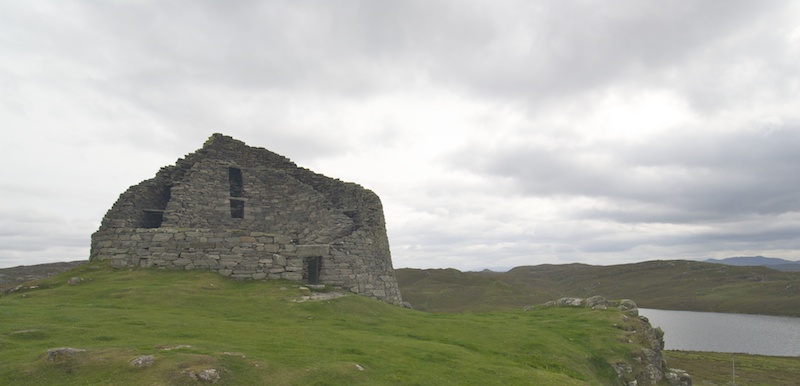 So, was Dun Carloway used as permanent living quarters, a grain silo, a prestigious meeting place, an unbelievably well fortified look-out post, or a defensive stronghold? Or all of the above?
So, was Dun Carloway used as permanent living quarters, a grain silo, a prestigious meeting place, an unbelievably well fortified look-out post, or a defensive stronghold? Or all of the above?
The answers lie deep in those massive walls , but when you stand in the centre of them you feel so far removed from their rightful inhabitants that you become a trespasser; you are there, but you are not welcome. This is one place that isn’t going to yield its identity to prying modern eyes. Dun Carloway might be in ruins, but it’s still defiant.
Sources:
Dun Carloway is in the care of Historic Scotland; admission is free, and there is a Visitor Centre close by.
All photos copyright © Colin Woolf
